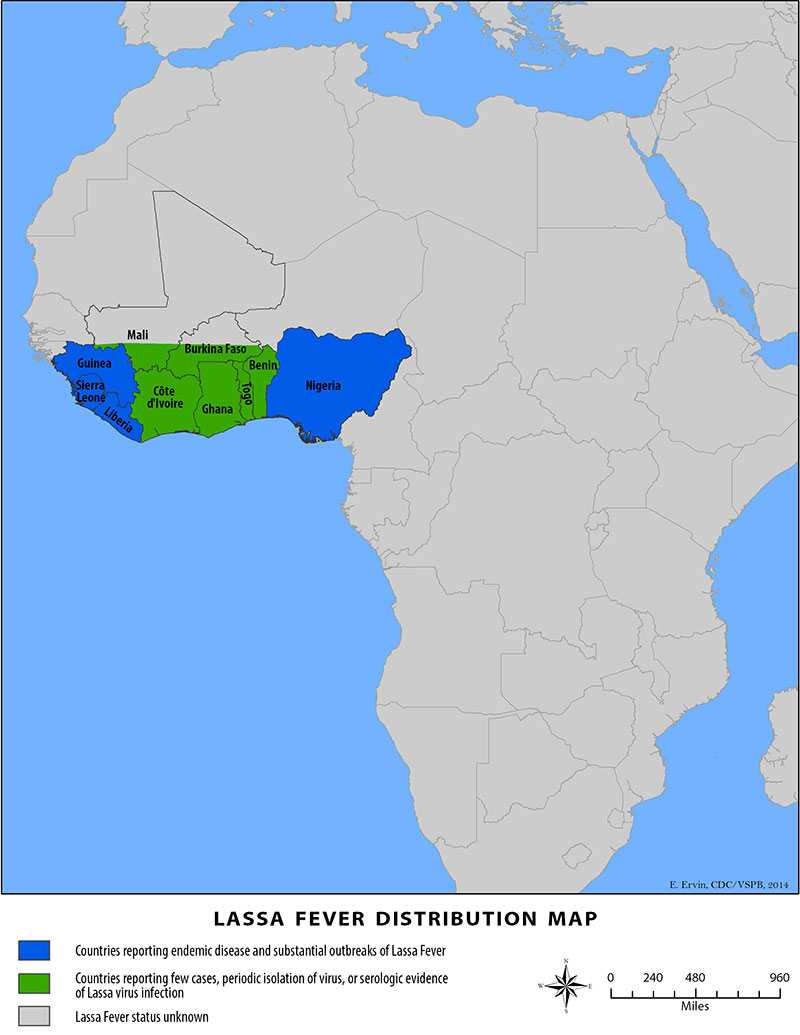 Lassa fever is an acute viral illness that occurs in west Africa. The illness was discovered in 1969 when two missionary nurses died in Nigeria. The virus is named after the town in Nigeria where the first cases occurred. The virus, a member of the virus family Arenaviridae, is a single-stranded RNA virus and is zoonotic, or animal-borne.
Lassa fever is an acute viral illness that occurs in west Africa. The illness was discovered in 1969 when two missionary nurses died in Nigeria. The virus is named after the town in Nigeria where the first cases occurred. The virus, a member of the virus family Arenaviridae, is a single-stranded RNA virus and is zoonotic, or animal-borne.
Lassa fever is endemic in parts of west Africa including Sierra Leone, Liberia, Guinea and Nigeria; however, other neighboring countries are also at risk, as the animal vector for Lassa virus, the "multimammate rat" (Mastomys natalensis) is distributed throughout the region. In 2009, the first case from Mali was reported in a traveler living in southern Mali; Ghana reported its first cases in late 2011. Isolated cases have also been reported in Côte d’Ivoire and Burkina Faso and there is serologic evidence of Lassa virus infection in Togo and Benin.
The number of Lassa virus infections per year in west Africa is estimated at 100,000 to 300,000, with approximately 5,000 deaths. Unfortunately, such estimates are crude, because surveillance for cases of the disease is not uniformly performed. In some areas of Sierra Leone and Liberia, it is known that 10%-16% of people admitted to hospitals every year have Lassa fever, which indicates the serious impact of the disease on the population of this region.
Resources
- Factsheet: What you need to know about Lassa Fever [PDF – 2 pages]
- Factsheet: Lassa Fever [PDF – 3 pages]
- Viral Hemorrhagic Fever (VHF) Information for Specific Groups
- References
- Page last reviewed: June 2, 2015
- Page last updated: June 2, 2015
- Content source:


 ShareCompartir
ShareCompartir
